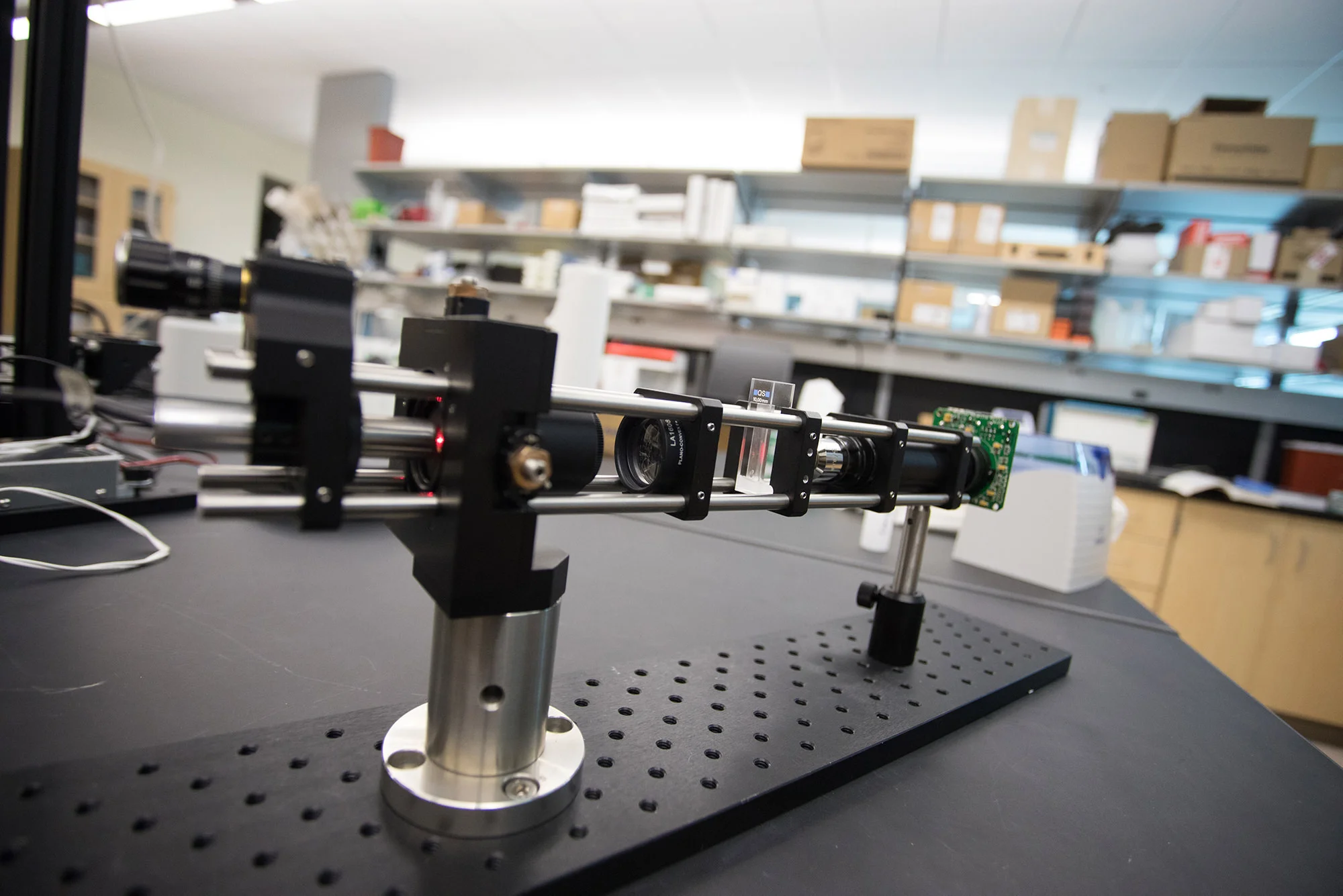Bench-Top In-Line Holographic Microscope


Bench-Top In-Line Holographic Microscope
Digital in-line holography allows for high resolution, high magnification imaging of microscopic particles in a relatively large sample volume.
Traditional high magnification imaging techniques result in very narrow depth-of-field and extremely small imaged volumes.
Holography substantially increases the depth-of-field (>1000 fold) over which in-focus images can be acquired, and enables characterization and enumeration of particles within a statistically meaningful sample volume.
The in-line digital holographic imaging system consists of a laser light source, spatial filter, beam expanding optics, objective lens, and a digital camera.
Holograms recorded by the camera are numerically reconstructed using the Kirchoff-Fresnel convolution kernel.
Automated image analysis techniques can then be used to count particles and measure characteristics such as size or shape.
